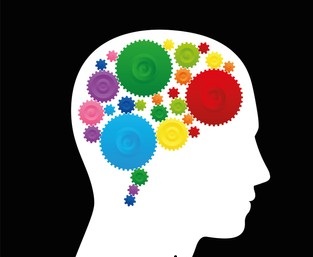Colors are everywhere and they affect our visuals and perceptions. Color psychology is the study of colors and the influence of colors on our behavior. What a person associates with color will obviously be related to past experience. When someone asked about your favorite color, your answer likely came from your positive experiences with that.
How Color can affect us?
The different colors produce different emotions for example color orange makes you hungrier, whereas the color blue is an appetite suppressant. The color pink has been found to calm violent prisoners, whereas yellow is seen as a very happy color but extreme amounts of the color yellow make babies cry.

The color blue represents intelligence, green is associated with nature. These are only a few ways that colors can affect us.
Color Psychology Research
An experiment was conducted to find out the effect of color on emotions. In this experiment, three pictures with different colors were presented to the audience and asked questions about their emotions.
The first question was asked is “Which one looks more appetizing?” It is found in research that warm colors increase appetite more than cool colors. 90% of people picked the warm-colored one.
The next question that was asked by the experimenter “Which picture looks more calming?” since pink has been proven to be a calming color. 70% of people picked the pink one.
The third was “Which person feels more threatening?” As red is often processed as a danger in our minds. 75% of people picked the red one.
What’s the science behind it? (Color Psychology Personality)
The vision of color influences our brain. We all know light travels in waves, and each color has a different wavelength. These different wavelengths hit our eyes in different ways and are transferred through our eyes as electrical impulses which go to our brain.
One of the brain parts hypothalamus plays important role in creating emotions. The hypothalamus in our body affects different functions such as sleep and behavioral patterns, appetite and metabolism, and body temperature.
When a color of a certain wavelength enters through our eyes, a neural transmission go-to brain part hypothalamus and hypothalamus affect our behavior. This is how and why certain colors affect us.
Color Psychology Marketing
Color Psychology is used in various industries including advertising, set design, and costume design. Usually, most people associate color with their immediate emotions. But the meaning of color doesn’t stop there there’s so much more to learn in the realm of color psychology.
Bright yellows make you feel good while darker shades almost make you feel sick yellow is inviting and it’s a big reason why McDonald’s features this color on their symbol.
The color of the Sun and the unforgettable smiley face color are typically associated with creativity, optimism, and liveliness.
Red is memorable and transcendent many marketers use red for their call to action buttons and rightfully, so people notice red it’s a big reason why stop signs bear the color.

Color psychology blue: The color blue is another color that emits a wide range of emotions for one person. it symbolizes intelligence and a sense of calmness for the other person. it’s cold and sad and used by corporate and Technology websites or hospitals not just to symbolize intelligence but trust as well also a fun fact. Blue is the most preferred color by all.
Brighter oranges for elements that you want to stand out and if you’re looking for a good background a shaded orange could work to provide a sense of warmth.
When we are sad, we might step outside or go for a walk, this very well could be because of the green trees in nature around us that provide a sense of refreshment and serenity. That’s why tourism companies use the color green.
The violet color symbolizes royalty. it’s majestic noble and lavish. it provides a sense of truthfulness and wisdom and is also a crowd favorite among many female consumers.
The color pink is a color of happiness and positivity. While pink is often associated with feminine products. it can be gender neutral as well but advertisers marketed it for women.
White is a color that we see all around us. it’s the primary color for paper and the walls and our homes or offices that might be because it symbolizes cleanliness and clarity
Black is a color of elegance and formality. You want a sleek look use black it’s why our phones and cars are often at the color black is a great background color as well so long as it’s paired with fiber colors in the foreground.
Brown is similar to green in that it provides a sense of all-natural it’s a supporting color that needs to be just right one shade of brown can look clean.
Color Psychology Chart
Three primary colors are yellow, blue, and red. it’s because these are the only colors that cannot be created when mixing any other two colors together. The color chart shows the position of color and emotions which are related to color. The blue is the symbol of trust, confidence, and loyalty. Green is a symbol of good health, growth in life.
The purple color is a status symbol of power, strong ambition, and creativity. Oink is considered a female color as most girls like to prefer pink color garments but psychologically it is a symbol of love, kindness, and innocence.

The white color is the symbol of purity, safety, and knowledge.